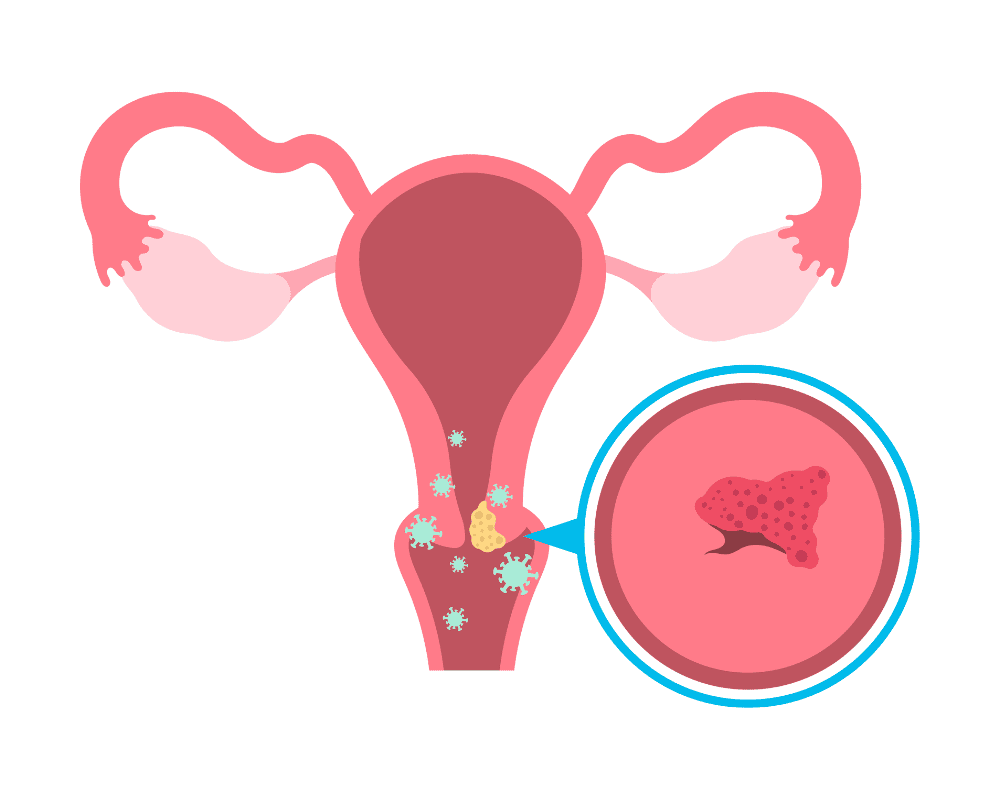Cervical Cancer: A Growing Concern in India

Cervical cancer remains one of the most significant public health challenges in India, affecting thousands of women each year. Despite being highly preventable and treatable, it is the second most common cancer among women in India, accounting for a large proportion of cancer-related deaths. Understanding the causes, prevention strategies, and the broader impact of cervical cancer is essential for curbing its alarming rise in the country.
The Prevalence of Cervical Cancer in India
India accounts for nearly 16-18% of the global burden of cervical cancer. In 2020, over 120,000 new cases were diagnosed in the country, and more than 75,000 deaths occurred due to the disease. These figures highlight the severity of the situation, as cervical cancer, when detected early, is one of the most treatable forms of cancer.
Cervical cancer primarily affects women in the age group of 30 to 59 years, especially those from lower socioeconomic backgrounds with limited access to healthcare. The high burden is driven by factors such as poor awareness, inadequate screening programs, and low uptake of preventive measures, particularly in rural and underserved areas.
Causes and Risk Factors
Cervical cancer is predominantly caused by persistent infection with Human Papillomavirus (HPV), which is a sexually transmitted infection. While HPV infections are common, only certain high-risk types of the virus, such as HPV-16 and HPV-18, lead to the development of cervical cancer. Women who have early sexual activity, multiple sexual partners, or weakened immune systems are at a higher risk of contracting HPV and, subsequently, cervical cancer.
Other risk factors include:
- Poor hygiene and sanitation
- Multiple pregnancies or early childbearing
- Smoking and the use of oral contraceptives for extended periods
- Inadequate nutrition leading to weakened immune systems
The Impact on India
Cervical cancer poses a significant social, economic, and health burden on India. Here are some of the most profound impacts:
Health System Strain: India’s healthcare infrastructure, particularly in rural areas, struggles to provide adequate screening, vaccination, and treatment options. A lack of awareness about early detection methods means that many women present with advanced stages of cancer, leading to poor survival rates and increased treatment costs.
Economic Impact: The economic burden of cervical cancer is substantial, not only for families but for the nation. Women in the productive age group are disproportionately affected, and their illness or death can lead to a loss of income, productivity, and increased healthcare expenditures for households. The cost of treating advanced-stage cervical cancer is also significantly higher than preventive measures like vaccination and early detection.
Social and Emotional Impact: Women with cervical cancer often face stigma, especially in rural communities where cancer is misunderstood or viewed with fear. This can lead to isolation, depression, and emotional distress. The disease also impacts families, as women are often the primary caregivers and income earners in many households.
Prevention and Control
Despite the severity of cervical cancer, it is largely preventable through a combination of vaccination, screening, and early treatment. The HPV vaccine, which protects against the most common cancer-causing strains of the virus, is a critical tool in reducing the incidence of cervical cancer. The Indian government has made strides in promoting the HPV vaccine, but challenges such as low awareness, cultural resistance, and logistical barriers remain.
Regular screening through Pap smears and HPV DNA tests can detect precancerous changes in the cervix before they develop into cancer. However, access to these screening programs is limited in many parts of India, particularly in rural areas where health services are often underfunded and understaffed.
In addition to medical interventions, education and awareness campaigns play a crucial role in changing perceptions around cervical cancer and encouraging preventive health behaviors. Health workers, NGOs, and government agencies must work together to educate women about the importance of vaccination, screening, and early treatment.
The Way Forward
To combat the rising tide of cervical cancer in India, a multi-faceted approach is needed. Expanding access to the HPV vaccine, improving the reach of screening programs, and raising awareness about the importance of early detection are key strategies that can save thousands of lives. The National Cancer Control Program and initiatives by organizations such as the Indian Cancer Society have made significant progress, but much more remains to be done.
By addressing the social, economic, and healthcare barriers that prevent women from receiving proper care, India can drastically reduce the burden of cervical cancer. Empowering women through education and making preventive healthcare accessible will be critical steps in this journey.
Conclusion
Cervical cancer is a preventable tragedy that continues to claim the lives of women across India. With the right combination of prevention, screening, and treatment strategies, the country can drastically reduce the incidence of this disease and improve survival rates. Collective action from policymakers, healthcare providers, and communities is essential to address this public health crisis and ensure a healthier future for Indian women.
